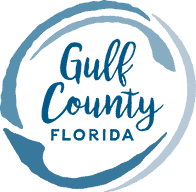Welcome to Mexico Beach, Florida, where wildlife conservation is in full swing. This beautiful coastal town is not only known for its stunning beaches and crystal-clear waters but also for its dedicated efforts towards preserving its diverse marine life and natural habitats. With a focus on eco-friendly practices, Mexico Beach is a shining example of environmental stewardship and wildlife conservation.
Key Takeaways:
- Mexico Beach, Florida is committed to wildlife conservation and marine life preservation.
- The town embraces eco-friendly practices to ensure the sustainability of its natural resources.
- Efforts are made to protect and restore diverse marine species and their habitats.
- The community plays an active role in conservation initiatives.
- Mexico Beach is an ideal destination for nature lovers and those passionate about wildlife conservation.
The National Wildlife Federation’s Accomplishments in the Gulf of Mexico

The National Wildlife Federation (NWF) has made significant contributions to environmental initiatives, wildlife rehabilitation, and nature conservation efforts in the Gulf of Mexico. Through their dedicated work, the NWF has achieved several milestones that have positively impacted the region.
One of the NWF’s notable accomplishments was playing a crucial role in securing the passage of the RESTORE Act. This legislation was instrumental in restoring the Gulf ecosystem following the devastating Deepwater Horizon disaster.
The NWF has also actively contributed to the Louisiana Coastal Master Plan. By advocating for restoration projects in the Mississippi River Gulf Outlet (MRGO) area, the organization has helped restore critical habitats and protect wildlife populations.
Furthermore, the NWF’s influence has extended to the comprehensive Everglades restoration plan, which aims to preserve and rehabilitate the unique ecosystem. By participating in the creation of Texas’ Coastal Resilience Master Plan, the NWF has promoted nature conservation efforts in the region, strengthening the coastal defenses and preserving important habitats.
These accomplishments highlight the NWF’s commitment to environmental sustainability and the well-being of wildlife in the Gulf of Mexico. Through their involvement in various restoration projects, the NWF has demonstrated their dedication to protecting endangered species, rehabilitating wildlife populations, and creating a more resilient natural environment.
The NWF’s work in the Gulf of Mexico showcases the importance of collaboration and community engagement in conservation efforts. By actively promoting environmental initiatives and supporting wildlife rehabilitation, the NWF has inspired individuals and communities to take part in preserving the region’s natural beauty for future generations.
Post-Hurricane Michael Conservation Efforts

Mexico Beach and the surrounding areas faced significant damage after Hurricane Michael in 2018. In the aftermath, the U.S. Fish and Wildlife Service collaborated with local communities to revive the region and enhance its ecological health.
The focus of the collaboration was on creating biodiverse landscapes, recreational opportunities, and resilient economies. By utilizing mapping tools like the Blueprint, conservation actions were prioritized, including downtown development, stormwater management, and trail networks.
These efforts not only aimed to protect endangered species but also promoted sustainable tourism and actively engaged the local community in conservation initiatives.
Sustainable Tourism: One of the key objectives of the post-hurricane conservation efforts was to promote sustainable tourism in Mexico Beach and its surroundings. By integrating conservation practices into tourism activities, the region aims to minimize its ecological impact and preserve the natural beauty for future generations.
Protecting Endangered Species: The restoration and conservation initiatives implemented after Hurricane Michael had a strong emphasis on protecting endangered species. By preserving habitats and creating sustainable environments, these efforts contribute to the long-term survival of vulnerable wildlife populations.
Community Involvement: The success of post-hurricane conservation efforts heavily relied on the involvement of the local community. Working together, residents, businesses, and organizations collaborated to restore and enhance the ecological health of Mexico Beach and its surrounding areas.
The partnership between the U.S. Fish and Wildlife Service and the community served as a model for effective conservation practices, demonstrating the power of collective action in protecting and preserving the natural environment.
Climate Change and Oyster Conservation

Climate change has a profound impact on the oyster population in the Gulf of Mexico, making it a critical concern for marine life preservation. The increased temperatures and changing ocean conditions affect the growth, survival, and reproductive patterns of oysters. Additionally, upstream water use and water management decisions further compound the challenges faced by these valuable species.
Oyster reefs play a vital role in maintaining the balance of the marine ecosystem. They provide essential habitat to numerous marine organisms and contribute to water quality by filtering pollutants. Therefore, protecting oysters is essential for the preservation of endangered species and the overall health of the marine environment.
An ongoing project is dedicated to understanding the impacts of climate change on oysters and finding effective mitigation strategies. Through scientific research and collaboration with environmental organizations and local communities, efforts are underway to enhance the resilience of oysters and their habitats.
To ensure the long-term survival of oysters in the Gulf of Mexico, it is essential to implement conservation measures that address the specific impacts of climate change. This may include habitat restoration, protecting vulnerable oyster populations, and promoting sustainable fishing practices.
By safeguarding oyster populations, we can protect the wider marine ecosystem and contribute to the preservation of endangered species. It is crucial to recognize the interconnectedness of all marine life and take proactive steps to mitigate the effects of climate change on oysters and the Gulf of Mexico as a whole.
Natural Infrastructure for Coastal Protection

Floodplains, tidal marshes, and barrier islands play a crucial role in safeguarding coastal communities in the Gulf of Mexico. These natural infrastructures not only provide essential habitat for wildlife but also serve as a natural defense against the impacts of natural disasters. By conserving these areas and implementing environmental initiatives, we can ensure the protection of endangered species while mitigating the devastating effects of hurricanes, storm surges, and rising sea levels on coastal communities.
Preserving Natural Habitats
Floodplains, with their ability to absorb and store excess water, help prevent flooding in coastal areas. They act as a sponge, slowing down the flow of water and reducing the risk of erosion and property damage. Tidal marshes, on the other hand, act as buffers by absorbing wave energy and reducing coastal erosion. These marshes also provide critical nursery habitats and feeding grounds for various marine species.
Barrier islands, with their unique formations and vegetation, form a protective barrier between the open sea and the mainland. They absorb the impact of storm waves and dissipate their energy, shielding coastal communities from the full force of hurricanes and tropical storms. These islands also provide essential habitats for a wide range of species, including migratory birds and endangered sea turtles.
Environmental Initiatives for Resilience
To ensure the long-term preservation of these natural infrastructures, it is crucial to implement environmental initiatives that foster their conservation. This includes protecting and restoring the vegetation and wildlife that inhabit these areas, as well as reducing human activities that may disrupt their delicate balance. By promoting sustainable land use practices and limiting development in these vulnerable coastal zones, we can minimize the detrimental impact on natural habitats and maximize their resilience against future climate change and sea-level rise.
Investing in wetland restoration and creating artificial oyster reefs can also enhance the protective capacity of these natural systems. Wetlands act as filters, purifying water and improving its quality, while oyster reefs provide valuable habitats for marine life and help stabilize shorelines. These initiatives not only contribute to the conservation of natural habitats but also bolster the overall health and resilience of coastal ecosystems.
The Blueprint and Conservation Planning
In the Southeast region of the United States, the Blueprint is a powerful mapping tool that plays a crucial role in supporting conservation planning efforts. It serves as a valuable resource in identifying critical areas for conserving natural habitats, prioritizing land acquisition, and guiding decision-making processes. By aligning with the conservation priorities of state natural resource agencies, the Blueprint contributes significantly to the protection of wildlife habitats in the Gulf of Mexico.
One of the key strengths of the Blueprint lies in its ability to foster collaboration and empower local stakeholders. By involving communities, non-governmental organizations (NGOs), and government agencies, this tool promotes environmental initiatives and ensures community involvement throughout the conservation process. Together, they work towards the common goal of preserving the region’s natural treasures and safeguarding the future of wildlife in the Gulf.
How the Blueprint Works
The Blueprint operates as a comprehensive framework for conservation planning. It integrates scientific data, models, and expert input to assess the ecological value of different areas. Using this information, it identifies priority locations for maintaining or restoring natural habitats. The tool also considers various factors, such as species diversity, connectivity, and resilience, to develop effective conservation strategies.
Based on the Blueprint’s recommendations, land managers and decision-makers can prioritize their efforts by focusing on high-priority areas. These areas may include critical migration corridors, nesting grounds, or habitats that are particularly vulnerable to human activities and climate change.
The Importance of Community Involvement
A fundamental aspect of successful conservation planning is community involvement. The Blueprint recognizes the vital role that local communities play in the protection and stewardship of natural habitats. By engaging with these communities, the Blueprint ensures that their voices are heard, their concerns are addressed, and their local knowledge is integrated into decision-making processes.
Community involvement not only fosters a sense of ownership and responsibility but also promotes long-term sustainability. By actively participating in conservation efforts, communities become invested in the preservation of their natural surroundings and can contribute valuable insights and ideas.
Collaboration for a Sustainable Future
The Blueprint encourages collaboration among diverse stakeholders, including communities, NGOs, and government agencies. By working together, these groups can pool their expertise, resources, and networks to achieve more significant conservation outcomes.
This collaborative approach ensures that environmental initiatives are implemented with a broader perspective, considering the unique needs and challenges of the Gulf of Mexico region. By combining the strengths of different stakeholders, the Blueprint promotes the development of comprehensive and effective strategies for conserving natural habitats and protecting the rich biodiversity found in this area.
With the Blueprint as a guiding framework and the active involvement of communities, environmental organizations, and government agencies, the Gulf of Mexico can continue to thrive as a haven for wildlife and a testament to successful conservation planning.
Promoting Community-Led Conservation
In the Gulf of Mexico, community involvement is at the heart of conservation efforts. By engaging with local communities, we aim to foster environmental stewardship, build climate resilience, and promote sustainable tourism. Together, we can make a difference in preserving the natural beauty of this region for future generations.
Fostering Environmental Stewardship
Community involvement plays a crucial role in fostering environmental stewardship. When individuals understand the importance of conservation and feel connected to their local environment, they are more likely to take action and make sustainable choices. Through educational programs, workshops, and community events, we empower individuals to become stewards of their environment and actively participate in conservation initiatives.
Building Climate Resilience
Climate change poses significant challenges to the Gulf of Mexico’s delicate ecosystem. By involving communities in climate resilience efforts, we work together to address the impacts of rising sea levels, more frequent extreme weather events, and other climate-related challenges. Through collaborative planning, adaptive strategies, and the implementation of sustainable practices, we can build resilience and protect our coastal communities.
Promoting Sustainable Tourism
Sustainable tourism is the key to preserving the natural beauty of the Gulf of Mexico while promoting economic growth. By engaging with local businesses, tour operators, and community members, we encourage sustainable tourism practices that minimize negative environmental impacts and support the conservation of local habitats. This way, we can ensure that tourism remains a positive force for both visitors and the environment.
Community Involvement in Action
Through community involvement, we have seen inspiring examples of individuals and groups taking the lead in conservation initiatives. Local beach clean-up events, community-based sea turtle monitoring programs, and grassroots movements for environmental awareness are just a few examples of how community-driven efforts have made a significant impact on preserving the Gulf of Mexico’s natural resources.
By working together, we can create a sustainable future for the Gulf of Mexico that balances environmental protection with economic prosperity. Let’s continue to promote community-led conservation, engage diverse stakeholders, and ensure the long-term sustainability of this beautiful region.
The Role of Science in Conservation
Science plays a crucial role in wildlife rehabilitation, marine life preservation, and environmental initiatives in the Gulf of Mexico. Through research and study, scientists develop effective conservation strategies that protect and restore critical habitats, rehabilitate wildlife populations, and promote sustainable practices for the long-term health of the region’s natural resources.
By conducting rigorous scientific research, experts can understand the impacts of climate change, water management decisions, and other factors that affect the delicate marine ecosystem. This knowledge forms the foundation for conservation efforts that aim to mitigate these effects and ensure the survival of diverse wildlife in the Gulf.
Scientific projects focus on the rehabilitation of wildlife populations, particularly those that are endangered or threatened. By implementing targeted conservation measures, scientists and conservationists work towards the preservation of marine life and the restoration of ecosystems.
In addition to wildlife rehabilitation, scientific research also supports broader environmental initiatives in the region. By studying the Gulf’s ecosystems, scientists can identify the most effective strategies for preserving and protecting natural habitats. This knowledge guides decision-making processes, ensuring that conservation efforts align with the unique needs of the Gulf of Mexico.
Through their scientific endeavors, researchers contribute to the sustainability of the Gulf’s marine resources. They play a crucial role in advancing knowledge, identifying emerging threats, and developing solutions that address these challenges. By applying scientific principles to conservation, scientists help create a harmonious balance between human activities and the preservation of the Gulf’s delicate marine environment.
Conclusion
Wildlife conservation efforts in Mexico Beach, Florida, and the greater Gulf of Mexico area play a crucial role in protecting diverse wildlife, preserving marine life, and ensuring the sustainability of natural habitats. Organizations like the National Wildlife Federation have made significant progress in restoring ecosystems, safeguarding endangered species, and promoting sustainable tourism.
Thanks to the use of advanced mapping tools like the Blueprint, conservationists can prioritize areas for protection, guide land acquisition decisions, and work towards the long-term preservation of wildlife habitats. Additionally, the active involvement of local communities has been instrumental in achieving conservation goals, fostering environmental stewardship, and building resilient ecosystems.
However, the work is far from over. Ongoing scientific research, supported by environmental initiatives and community involvement, remains essential for the continued success of wildlife conservation in the region. By embracing these efforts, we can ensure the continued protection of wildlife, the preservation of marine ecosystems, and the long-term sustainability of our natural heritage in Mexico Beach and the Gulf of Mexico.
FAQ
What wildlife can be found in Mexico Beach, Florida?
Mexico Beach, Florida is home to a diverse range of wildlife, including dolphins, whales, sharks, sea turtles, and over 15,000 unique species.
What has the National Wildlife Federation achieved in the Gulf of Mexico?
The National Wildlife Federation has played a crucial role in advocating for the restoration of key coastal habitats, securing the passage of the RESTORE Act, contributing to restoration plans, and promoting environmental initiatives and wildlife rehabilitation in the region.
What conservation efforts were undertaken after Hurricane Michael in Mexico Beach?
After Hurricane Michael, the U.S. Fish and Wildlife Service collaborated with local communities to revive the region and enhance its ecological health. Efforts focused on sustainable tourism, protecting endangered species, and engaging the local community in conservation initiatives.
How does climate change impact oyster conservation in the Gulf of Mexico?
Climate change, upstream water use, and water management decisions have significant effects on oysters and their critical role in preserving marine life. Efforts are underway to understand and mitigate these impacts to protect endangered species and sustain the marine environment.
What natural systems are important for coastal protection in the Gulf of Mexico?
Floodplains, tidal marshes, and barrier islands are vital systems for protecting coastal communities and preserving natural habitats. By conserving these areas and implementing environmental initiatives, we can ensure the protection of endangered species and mitigate the impacts of natural disasters.
What is the Blueprint and how does it support conservation planning in the Gulf of Mexico?
The Blueprint is a mapping tool used to identify critical areas for conservation, prioritize land acquisition, and guide decision-making processes. It aligns with the conservation priorities of state natural resource agencies and contributes to the protection of wildlife habitats in the Gulf of Mexico.
Why is community involvement important in wildlife conservation?
Community involvement is vital as it fosters environmental stewardship, builds climate resilience, and promotes sustainable tourism. By engaging with local communities, conservation initiatives can align with their needs and values, leading to more effective and sustainable conservation efforts.
What role does science play in wildlife conservation?
Science plays a crucial role in understanding the impacts of climate change and developing effective conservation strategies. Through scientific research, efforts can be made to protect critical habitats, rehabilitate wildlife populations, and promote sustainable practices to ensure the long-term health of the Gulf’s natural resources.
Why is wildlife conservation important in Mexico Beach, Florida?
Wildlife conservation is essential for protecting diverse wildlife, preserving marine life, and sustaining natural habitats. Through collaborative efforts, restoration projects, and community involvement, significant strides have been made in restoring ecosystems, protecting endangered species, and promoting sustainable tourism in the region.


